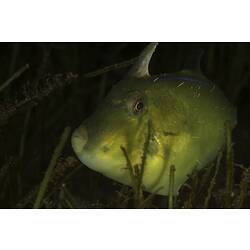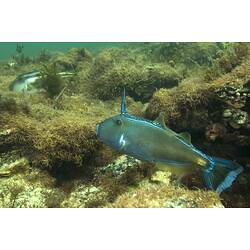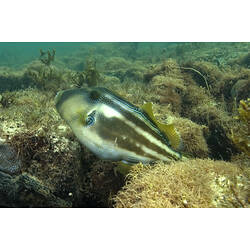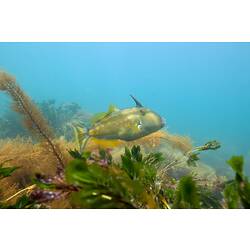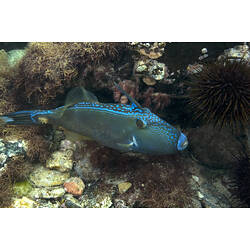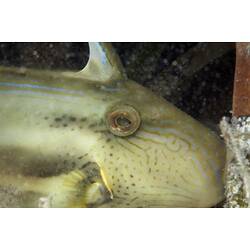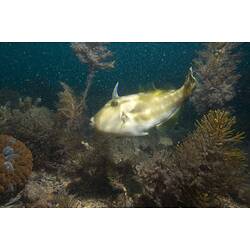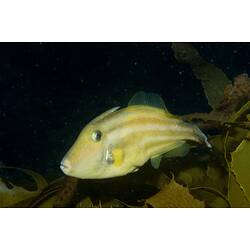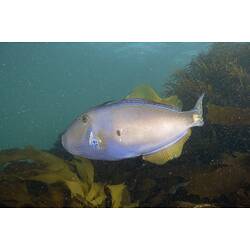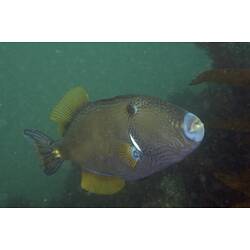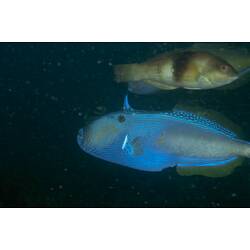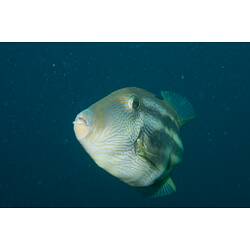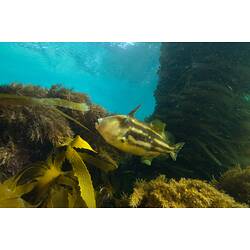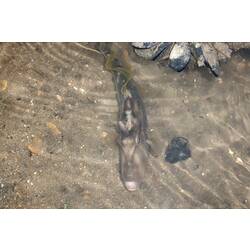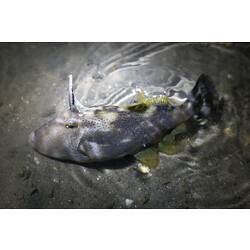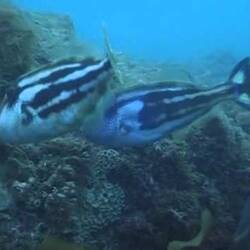General Description
Body elongate and compressed, with two to four pairs of curved spines on each side of tail base in adults, larger in males. Two dorsal fins, first with two spines, with the hind edge of the front spine serrated. Males bluish with fine blue lines and spots on the head and along the bases of the dorsal and anal fins; often a large yellow or orange patch, or indistinct yellowy blotches on the sides. Females and juveniles usually pale greenish, yellow or brown, with blue lines and spots on the head and several broad dark stripes along the body. Usually 30 cm long head to tail tip (up to 55 cm).
Biology
Sixspine Leatherjackets feed on bottom-dwelling (benthic) invertebrates, including molluscs, worms and crustaceans but they also eat some algae. Males and females have different colour patterns. The colour pattern is also highly variable across the species' range.
Distribution
Eastern, southern and western Australia, including Tasmania.
Habitat
Adults are found on shallow to deep reefs in bays, harbours and along the coast in depths to 45 m. Juveniles prefer sheltered areas, especially seagrass beds.
More Information
-
Animal Type
-
Animal SubType
-
Brief Id
Variable coloured fish with blue lines and spots on the head and along the base of the fins, 2-4 pairs of spines at base of tail and a large barbed dorsal-fin spine.
-
Habitats
-
Diet
Omnivore
-
Diet Categories
Invertebrates, Molluscs, Crustaceans, Worms, Algae
-
Endemicity
-
Commercial
Yes
-
Conservation Statuses
CITES: Not listed, FFG Threatened List: Not listed, EPBC Act 1999: Not listed, IUCN Red List: Least Concern
-
Depths
Shallow (1-30 m)
-
Water Column Locations
On or near seafloor
-
Taxon Name
-
Scientific Author
(Quoy & Gaimard, 1824)
-
Common Name
Sixspine Leatherjacket
-
Kingdom
-
Phylum
-
Subphylum
-
Superclass
-
Class
-
Order
-
Family
-
Genus
-
Species Name
freycineti

